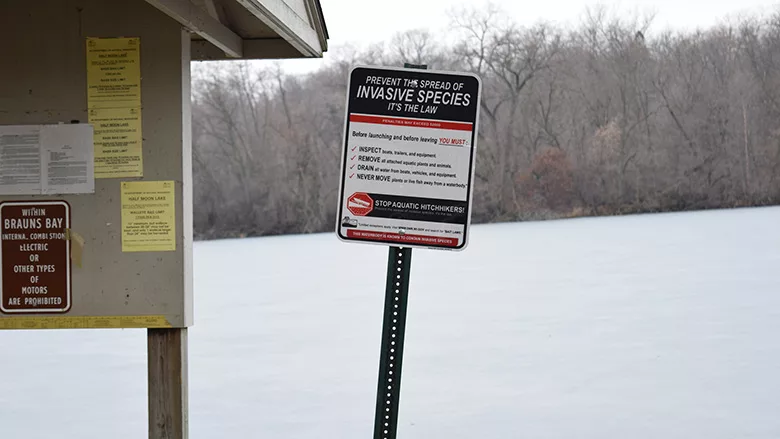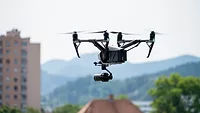How to Address Invasive Species during Property Restoration

Photo credit: MrAlanC/iStock / Getty Images Plus via Getty Images
When completing a property restoration, professionals will find a diverse variety of plants and animals. Some are harmless and can be cut back or relocated. Others may be a welcome part of the area’s charm. However, invasive species present a more significant problem.
An invasive species is a foreign plant or animal that isn’t meant to exist in a given area. They come from outside the region and often appear as an unintentional byproduct of something else. These species threaten local flora and fauna and can easily re-invade a restored property.
So, where should professionals start when handling invasive species?
Best Practices for Managing Invasive Species
When completing a property restoration, there are some general things to keep in mind.
1. Educate Yourself
Learning about the native and invasive species in your area is crucial for identifying and removing problematic plants and animals. The National Invasive Species Information Center is an excellent resource for identifying the invasive species in your area.
2. Protect Native Plant Species
When restoring land, prioritizing the conditions for native species to thrive can help prevent invasive plant growth. Different soils, grasses, mulching and other strategies can cater to the plant species in your location.
3. Prevent Invasive Animal Species
Preventative measures to keep out invasive animal species can help your property stay restored. You can often use natural or chemical sprays for smaller species to keep them from infecting your plants.
Sometimes, pairing different plant species can keep invasive species at bay. For larger invaders, fencing and keeping their food away can stop them from entering the property.
Handling Common Invasive Species
More than 6,500 non-native species are identified in the United States, contributing to around $100 billion dollars in economic damage.2 Here are some common examples and how to properly address them.
Invasive Animal Species
Animals can be hard to remove from a property since they’re often extremely mobile or have large enough colonies that it’s hard to get them all. Some of the most common invasive animal species include the following.
1. Burmese Python
Currently found in Southern Florida, these pythons are spreading North.3 Native to Africa, the snakes are popular pets and the accidental or intentional release of one is the presumed reason they roam the state.
Burmese pythons are non-venomous but can cause severe lacerations if one bites someone. Virtually all of these incidents happen when someone intentionally bothers the snake.4
They are a nuisance to the state’s ecosystem, eating small native species. If you encounter these snakes on your property, the government encourages you to capture and humanely kill them. You can also call the Exotic Species Hotline at 888-Ive-Got1.
2. Sirex Woodwasp
The sirex woodwasp is native to Africa and Eurasia but is invasive throughout the Eastern United States and parts of Canada. They most likely came through wood packing materials in international shipping.5
These wasps damage and kill trees. They primarily invade pine but also spruce, fir, larch and Douglas fir.
Thinning concentrated trees can keep the wasps from spreading. Chemical solutions can work short-term but could damage your trees. Experts recommend introducing a biological control agent like a parasitic nematode. They sterilize female wasps, preventing them from reproducing.6
3. Feral Swine
You can find these wild hogs in southern and western states, which are a nuisance on a property. They are the same species as farm pigs and got introduced to the United States as a food source by 1500s settlers.7
These pigs live in the wild and roam properties, damaging the land through their rooting behavior. Feral swine can also spread diseases to pets and animals, making the property even more uninviting.
While humanely killing animals is an option in severe cases, the USDA recommends trying non-lethal methods. Humane traps can help you safely remove the pigs from a property, and sturdy fencing can help with entry.
4. Invasive Carp
Various invasive carp species entered the US in the 1970s to control parasites, algae and weeds in aquatic farms. Several species escaped, leading to an infestation of rivers and lakes along the Mississippi River. They include the silver, bighead and grass varieties.
These fish disturb native populations by outcompeting them for food. They can get large and there is evidence that they worsen the water quality in their adopted habitats.8
The best way to handle invasive carp is to report it to your state’s Department of Natural Resources. Do not remove the fish from the water or transport any water to another water body if you see one when boating, thoroughly rinse your boat when finished. The federal government is in the process of implementing methods for controlling the fish.
Invasive Plant Species
There are many invasive plant species infecting properties throughout the country. Here are some of the most common.
1. Kudzu Vine
Known by many as “the vine that ate the South,” the United States first saw this Japanese vine at the 1876 Philadelphia Centennial Exposition. The US Soil Conservation Service promoted it in the early-to-mid 1900s to prevent soil erosion, but things quickly got out of hand. One vine can grow a foot a day and mature plants can spread around 100 feet.9
The best way to manage the vine is to cut it as close to the ground as possible before treating the stem with a glyphosate herbicide.
2. Eastern Red-Cedar
These trees are a nuisance to many central states by effectively killing off grasslands. Eastern Red Cedars accomplish this task by intercepting up to 60% of annual rainfall with dense canopies. They spread across the US when land regulations limited the number of controlled fires in the area.10
Complete mechanical removal is the best way to conquer Eastern red-cedars, but you can use herbicides. For smaller trees, a controlled fire is also an option.
3. Foxtail Grass
Also called “buffelgrass,” foxtail is a warm-season perennial in the south. It is native to India and Africa and came to San Antonio, Texas, in the 1940s. By the 1970s, it covered 90% of seeded grasslands. It pushes out invasive grass species and is harmful to wildlife.11
You can manage foxtail grass on your property by using a glyphosate herbicide and fertilizing the soil to give desired flora the best chance of survival.
Summary
Invasive species are common across the US and are easy to run into when restoring property. Handling them becomes easy when the person restoring it knows which plants and animals are around and which pose a threat.
Sources
- USDA National Invasive Species Information Center Databases https://www.invasivespeciesinfo.gov/type/databases
- USA Today, Invasive species already cost billions. As the climate warms, the damage is expected to get worse. https://www.usatoday.com/story/news/2022/07/30/invasive-species-cost-billions-may-grow-worse-climate-change/10172612002/
- USGS Where are Burmese pythons or other large constrictors distributed in Florida?https://www.usgs.gov/faqs/where-are-burmese-pythons-or-other-large-constrictors-distributed-florida
- University of Florida, Florida Museum Florida Snake ID Guide: Burmese Python https://www.floridamuseum.ufl.edu/florida-snake-id/snake/burmese-python/#:~:text=Non%2Dvenomous.&text=However%2C%20larger%20Burmese%20Pythons%20have,bites%20can%20cause%20severe%20lacerations.
- Invasive Species Centre Sirex Woodwasp https://www.invasivespeciescentre.ca/invasive-species/meet-the-species/invasive-insects/sirex-woodwasp/
- Mississippi Forestry Commission Sirex Woodwasp https://www.mfc.ms.gov/forest-health/forest-pests/sirex-woodwasp/#:~:text=How%20to%20Control%20Sirex%20Woodwasp,ultimately%20sterilizes%20the%20adult%20females.
- USDA Animal and Plant Health Inspection Service Feral Swine – Managing an Invasive Specieshttps://www.aphis.usda.gov/aphis/ourfocus/wildlifedamage/operational-activities/feral-swine
- NPS Invasive Carp Overview https://www.nps.gov/miss/learn/nature/ascarpover.htm
- The Nature Conservancy Kudzu: The Invasive Vine that Ate the South https://www.nature.org/en-us/about-us/where-we-work/united-states/indiana/stories-in-indiana/kudzu-invasive-species/
- Diamond Mowers Blog Managing Invasive Trees & Vegetation of the United States https://blog.diamondmowers.com/managing-invasive-trees
- Texas A&M, Agrilife Extension Plants of Texas Rangelands Foxtail Grass https://rangeplants.tamu.edu/plant/buffelgrass/
Looking for a reprint of this article?
From high-res PDFs to custom plaques, order your copy today!








